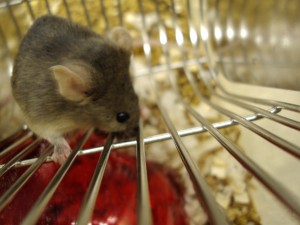Common House Mice (Mus musculus):
The most extensively used rodent species in research
WHY ARE THEY THE CHOSEN ONES?
- Physiological and genetic similarities to humans
- Fully sequenced genome: can conveniently be analyzed and manipulated to induce diseases
- Natural ability to develop sicknesses that humans also battle:
– cancer
– atherosclerosis
– hypertension
– diabetes
– osteoporosis -
How they are involved in research
- Test subjects for the safety of novel medical procedures and drugs prior to clinical studies on humans

- In vivo production factories for biological reagents such as monoclonal antibodies and vaccines

- Guineas pigs for the toxicity and other negative effects of new chemical products such as household cleaners and pesticides or biological relevant studies involving venoms and carcinogens

- Models for human diseases and associated treatments
– Techniques:Insertion of new genes to a mouse’s germ line via molecular techniques such as homologous recombination, knock-out (replace existing genes with altered versions), and knock-in (alter mouse gene in natural location) procedures combined with in vitro fertilization and ovary transplantation- Product: Transgenic mice- What is a transgenic mouse? Your own custom made genetically modified animal; they are then selectively inbred to produce strains that are prone to diseases such as cancer, diabetes, obesity, blindness, anxiety, aggressive behaviour, alcoholism, or drug addiction

